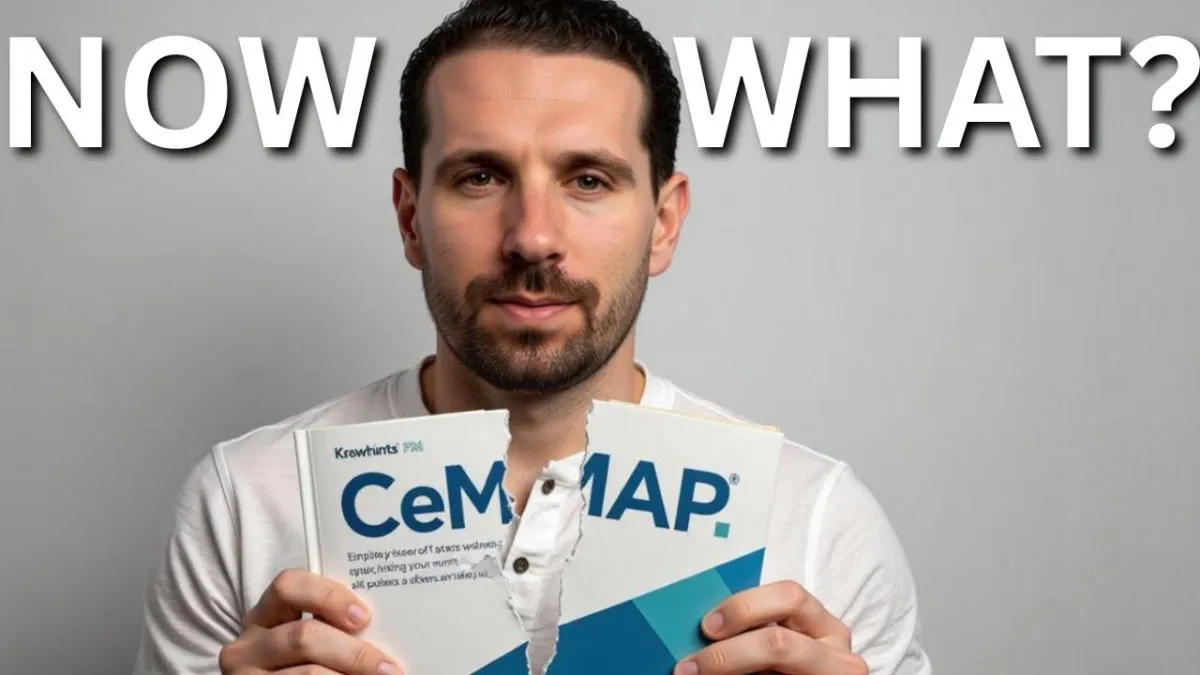Check out my YouTube channel for even more content HERE

CeMAP 2026 Syllabus Changes Explained: What Every Future Mortgage Advisor Must Know
Big Changes to the CeMAP Qualification in 2026: What Every Future UK Mortgage Adviser Needs to Know
If you're considering becoming a mortgage adviser in the UK and you're currently working through your CeMAP qualification, there's a massive change coming in 2026 — and you need to know about it.
This isn’t a minor update. The CeMAP syllabus is undergoing a full structural and strategic overhaul, shifting from theoretical learning to applied, scenario-based training. The new qualification is designed to reflect the real-world demands of the modern mortgage market, as well as updated ethical and regulatory standards.
Whether you’re mid-study or just starting out, this article will walk you through:
Why CeMAP is changing
Key transition dates
What’s actually changing in each module
How to prepare
What to look for in a training provider
Why Is the CeMAP Qualification Changing?
The financial services industry has changed — and CeMAP needed to catch up.
The traditional CeMAP structure, while effective for years, has been criticised for being:
Too focused on memorisation
Light on practical, real-life scenarios
Not aligned with the modern regulatory and ethical framework
The LIBF — now rebranded as the Walbrook Institute of Finance — is raising the standard. The goal is to develop advisers who are confident, capable, and ethical, with skills that reflect today’s expectations in financial advice.
The new qualification emphasises:
Applied learning and real-world case studies
A deeper focus on ethics and client relationships
A more streamlined and logical structure
What Are the Key Dates for the CeMAP Transition?
Here’s the full timeline for the transition:
29 September 2025 – Final day to register under the current CeMAP syllabus
30 September 2025 – New study materials released for updated FSRE, Module 2, and Module 3
10 November 2025 – First sittings begin under the new exam format
12 January 2026 – Final day to sit exams under the current structure (including resets)
13 January 2026 onward – All exams follow the new syllabus only
What does this mean for you?
If you're already enrolled in the current CeMAP structure, you must complete all exams by 12 January 2026 or you’ll need to restart under the new system — and that means sitting a more advanced qualification.
What’s Actually Changing in the New CeMAP Modules?
CeMAP 1: How Is Financial Services Regulation and Ethics Changing?
This is the most significant change.
Previously, CeMAP 1 was a Level 3 qualification covering foundational theory. It’s now replaced by the FSRE (Financial Services Regulation and Ethics), which is a Level 4 standalone module.
The new FSRE is split into two key units:
FR1 – Industry structure, regulations, FCA framework
FE2 – Ethics, client relationships, advice processes, and conduct
Exam format:
25 multiple choice questions
3 case studies per unit with 5 scenario-based questions each
This upgrade requires deeper comprehension and judgment — it’s not about memorising facts. It’s about thinking like an adviser, interpreting complex situations, and applying ethical decision-making in context.
CeMAP 2: What’s Changing in the Mortgage Module?
This module has been streamlined from four units into two. The new structure better mirrors the actual advisory journey — making the content easier to understand and more directly applicable.
You’ll still cover:
Mortgage regulation
Product types
The home buying process
Lending criteria
Affordability assessment
What’s different?
There’s less repetition, and a stronger focus on applying knowledge in real conversations with clients.
CeMAP 3: What’s New in the Assessment of Mortgage Advice Knowledge?
Previously seen as a “bolt-on,” CeMAP 3 is now a robust, standalone module with its own syllabus.
The new version:
Is still scenario-based
Now includes clearly defined learning outcomes
Requires written justifications of your advice
Tests your ability to recommend and explain mortgage solutions
This means the module now replicates real-world advice sessions, making it a more realistic test of your readiness for client work.
How Should You Prepare for the New CeMAP Structure?
If you’re a student — or planning to become one — here’s how to approach your studies under the new framework.
1. Don’t Underestimate the New FSRE Module
This isn’t a basic intro anymore. It’s a Level 4 financial planning foundation. You’ll need to block off time for deeper study and begin practising case studies early.
2. Train Like You’ll Advise
This isn’t about passing an exam. It’s about developing the communication skills and judgment needed to give quality advice. Learn how to justify recommendations, explain risks, and spot client needs.
3. Choose the Right Training Provider
Your provider should:
Offer up-to-date FSRE content
Include mock exams with case study scenarios
Deliver training with a coaching approach, not just PDFs
Prepare you for the real exam format, not just quizzes
Avoid any provider that’s simply rebranding old materials — ask them how they’re supporting students through this transition.
4. Stay Consistent
The biggest challenge isn’t the difficulty — it’s sticking to the schedule. Use:
Weekly study targets
Accountability check-ins
Milestones like mock exams and tutor calls
What Are Your Options If You’re Already Studying CeMAP?
If you’re already part-way through the current CeMAP path:
You have until 12 January 2026 to complete your exams
You must register for current modules by 29 September 2025
Important Tip:
If you've started CeMAP 1 — finish it. Don’t wait. The new FSRE module is longer, harder, and assessed at a higher level.
If you’re just about to start and want to follow the old route, register before September 2025 and aim to complete all three exams before January 2026.
Why Do These CeMAP Changes Actually Matter?
These changes aren’t just academic. They reflect a fundamental shift in what it means to be a mortgage adviser.
Mortgage advice isn’t just about products and rates. It’s about:
Understanding complex affordability frameworks
Building ethical client relationships
Navigating protection conversations
Balancing client outcomes with compliance
The new CeMAP structure positions you as a true financial guide, not just a form-filler. It raises the standard — and your potential.
Final Thoughts: What Should You Do Now?
If you’re serious about becoming a mortgage adviser, these changes should motivate you — not scare you.
Next steps:
Decide whether to follow the current or new path
Set clear deadlines and stick to them
Choose a training provider that’s ready for 2026
Study with purpose — not just to pass, but to advise
Because this qualification is more than a box to tick — it’s the foundation of a career. And with the new structure, it’s clearer than ever that the industry wants better advisers, not just more of them.
Still planning your CeMAP journey?
Check out my for a full breakdown of your career options once you’re qualified.
